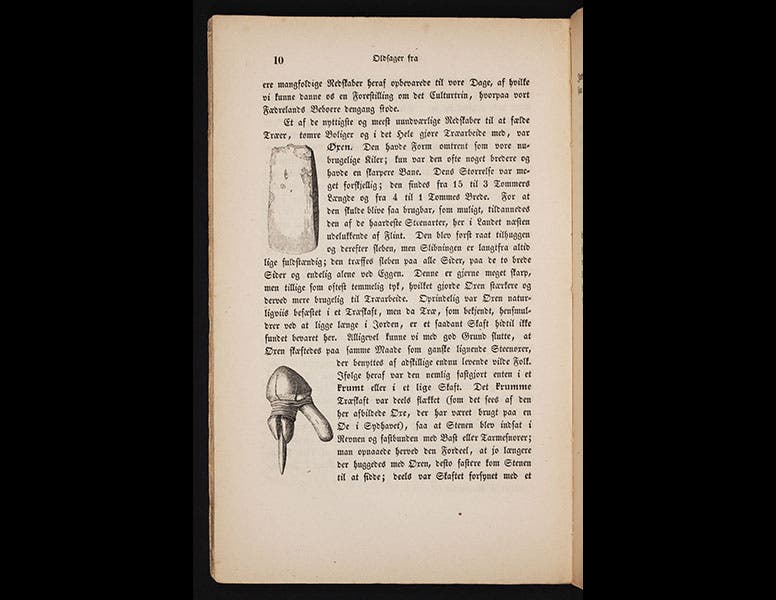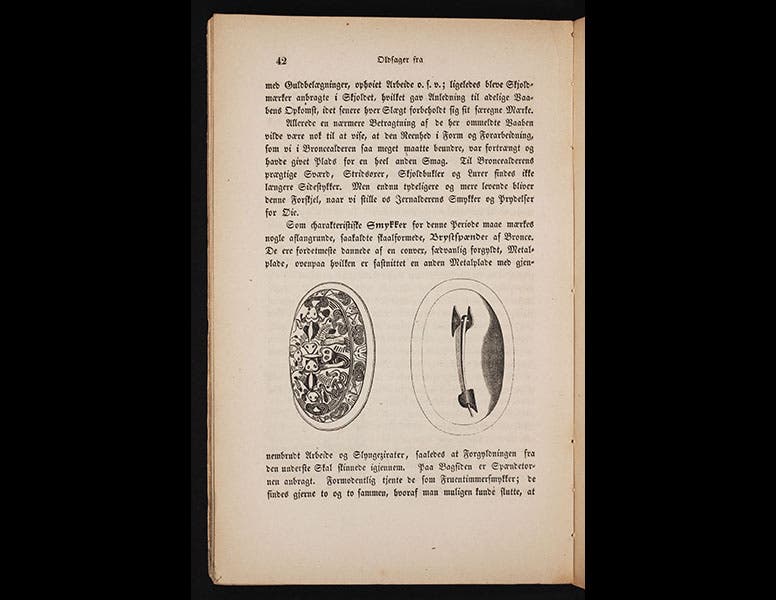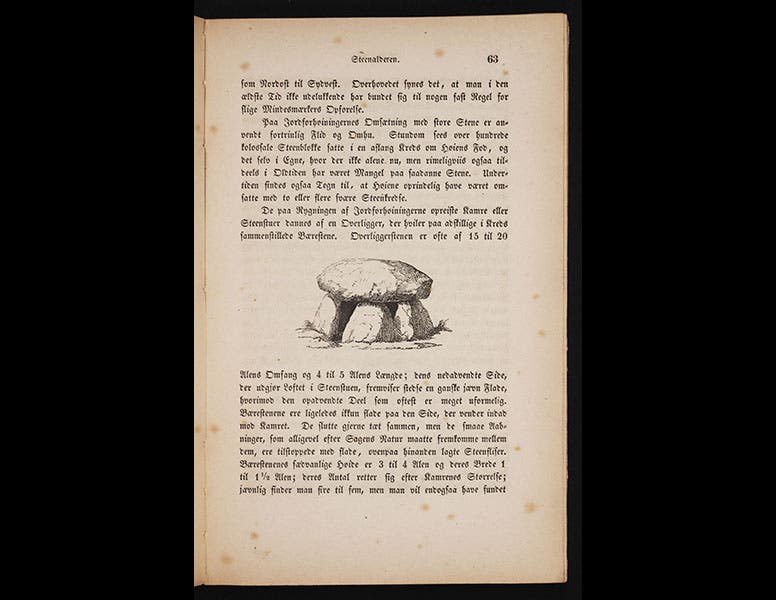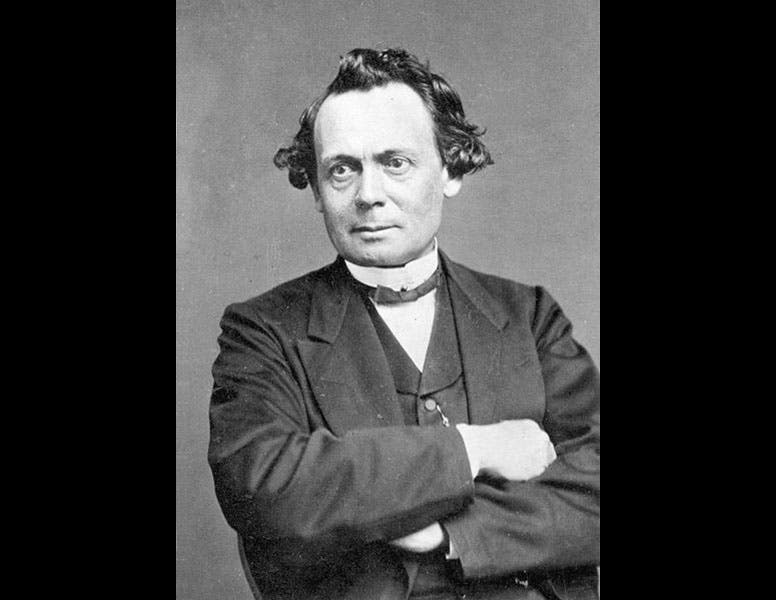Scientist of the Day - Jens Jakob Worsaae

Linda Hall Library

Linda Hall Library

Linda Hall Library

Linda Hall Library

Linda Hall Library
Jens Jakob Worsaae, a Danish archaeologist, was born Mar. 14, 1821. Worsaae was the first archaeologist to demonstrate from field work that the making of stone tools had been succeeded by the manufacture of bronze tools, which in turn had been followed by the fabrication of iron tools, giving us a Stone Age, a Bronze Age, and an Iron Age. This Three-Age system, as it is called, had originally been proposed by a fellow countryman, Christian Jürgensen Thomsen, as a way to organize the artifacts in the National Museum of Denmark. It remained for someone to show that this was a true historical sequence, which is what Worsaae did, with his excavations of burial mounds and peat bogs in Denmark. Worsaae presented his defense of the Three-Age System in a Danish publication, Danmarks Oldtid oplyst ved Oldswager og Gravhoi (1843; fifth image)), which was translated into English in 1849 as Primeval Antiquities of Denmark. We have both of these editions in the History of Science Collection. The illustrations above are from the first Danish (1843) edition, and depict stone axes (second image), a bronze blade (first image), and an iron shield (third image). The book also contains an extensive section on barrows and tombs (fourth image). Worsaae was adamant that archaeology provided a better insight into life in early Denmark than any written records or orally transmitted sagas.
We also have the work that inspired Worsae, Thomsen's Ledetraad til nordisk oldkyndighed, in our History of Science Collection; in fact, we have the original Danish edition of 1836, and a German and English translation. We featured Thomsen as our Scientist of the Day, on Dec. 29, 2016.
Dr. William B. Ashworth, Jr., Consultant for the History of Science, Linda Hall Library and Associate Professor, Department of History, University of Missouri-Kansas City. Comments or corrections are welcome; please direct to ashworthw@umkc.edu.







